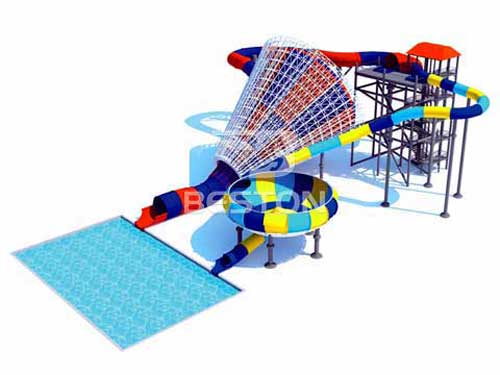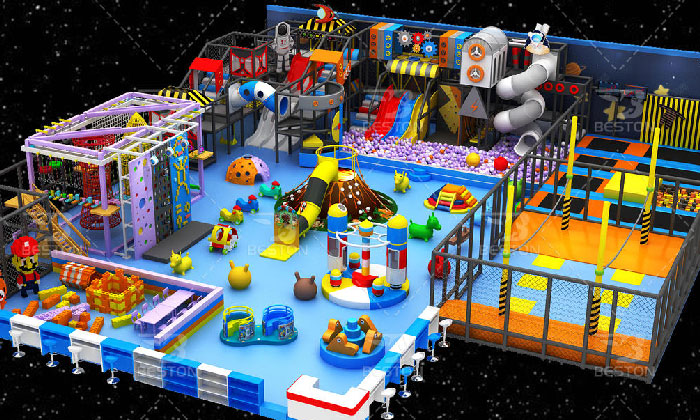Indoor and outdoor playgrounds offer children opportunities for physical activity, social interaction, and imaginative play, but they differ significantly in their design, features, and benefits. In this essay, we’ll explore the distinctions between indoor and outdoor playgrounds across various aspects.
1. Design and Environment:
Indoor playgrounds are typically housed within a controlled indoor environment, such as a recreational center or shopping mall. These spaces often feature soft play structures, padded flooring, and climate control systems to ensure comfort and safety regardless of external weather conditions. In contrast, outdoor playgrounds are situated in open-air settings, such as parks, school yards, or residential neighborhoods. They incorporate natural elements like trees, grass, and sand, along with sturdy equipment made from materials like metal or wood. The design of outdoor playgrounds tends to be more expansive and diverse, offering a wider range of activities and experiences.
2. Safety and Supervision:
Safety considerations vary between indoor and outdoor playgrounds. Indoor playgrounds (https://amusementrides.ph/indoor-playground-supplier-philippines/) are enclosed spaces, which can provide a greater sense of security for parents and caregivers, especially when it comes to younger children. The equipment in indoor playgrounds is often designed with softer materials and rounded edges to minimize the risk of injuries from falls or collisions. Additionally, indoor playgrounds typically have staff members or supervisors present to enforce safety rules and monitor children’s activities. Outdoor playgrounds, on the other hand, may pose different safety challenges due to exposure to natural elements and uneven terrain. While outdoor playgrounds may offer more opportunities for adventurous and imaginative play, they also require vigilant supervision to ensure children navigate the environment safely and responsibly.
3. Accessibility and Inclusivity:
Indoor playgrounds are generally more accessible year-round, regardless of weather conditions or time of day. This accessibility makes them suitable for play during inclement weather or in regions with extreme temperatures. Indoor playgrounds may also be designed with accessibility features to accommodate children with disabilities, such as ramps, wide pathways, and inclusive play equipment. Outdoor playgrounds, while often more expansive and varied in design, may be subject to weather-related closures or limitations, particularly in regions with harsh winters or rainy seasons. However, outdoor playgrounds have the advantage of providing children with opportunities to connect with nature and engage in unstructured outdoor play, such as water park slides for sale, which can have numerous physical, emotional, and cognitive benefits.

4. Creativity and Imagination:
Both indoor and outdoor playgrounds foster creativity and imaginative play, but they do so in different ways. Indoor playgrounds often feature themed play areas, interactive games, and sensory experiences that encourage imaginative role-playing and exploration. These controlled environments provide a canvas for children to immerse themselves in imaginative scenarios without distractions from the outside world. Outdoor playgrounds, on the other hand, offer a more dynamic and ever-changing backdrop for imaginative play. Children can engage with natural elements like rocks, sticks, and water, using their imagination to transform the outdoor space into a jungle, castle, or spaceship. The open-ended nature of outdoor play encourages children to take risks, problem-solve, and collaborate with peers in unstructured environments.
5. Physical Health and Development:
Both indoor and outdoor playgrounds play a crucial role in promoting children’s physical health and development. Indoor playgrounds offer opportunities for active play and exercise, which are essential for developing motor skills, coordination, and strength. They also provide a safe environment for children to engage in physical activities regardless of external weather conditions. Outdoor playgrounds, with their open spaces and varied terrain, offer additional physical challenges and stimuli. Playing outdoors exposes children to fresh air, sunlight, and natural elements, which can contribute to overall health and well-being. Outdoor play also encourages children to engage in activities like running, climbing, and jumping, which support physical development and cardiovascular fitness.

In conclusion, indoor and outdoor playgrounds each offer unique benefits and experiences for children. While indoor playgrounds provide a controlled and climate-controlled environment with soft play structures and supervised activities, outdoor playgrounds offer expansive, natural settings that encourage unstructured play and connection with nature. Both types of playgrounds play a vital role in promoting children’s physical, social, and emotional development, providing opportunities for exploration, creativity, and fun. If you want to start a playground, you can go to amusementrides.ph.
